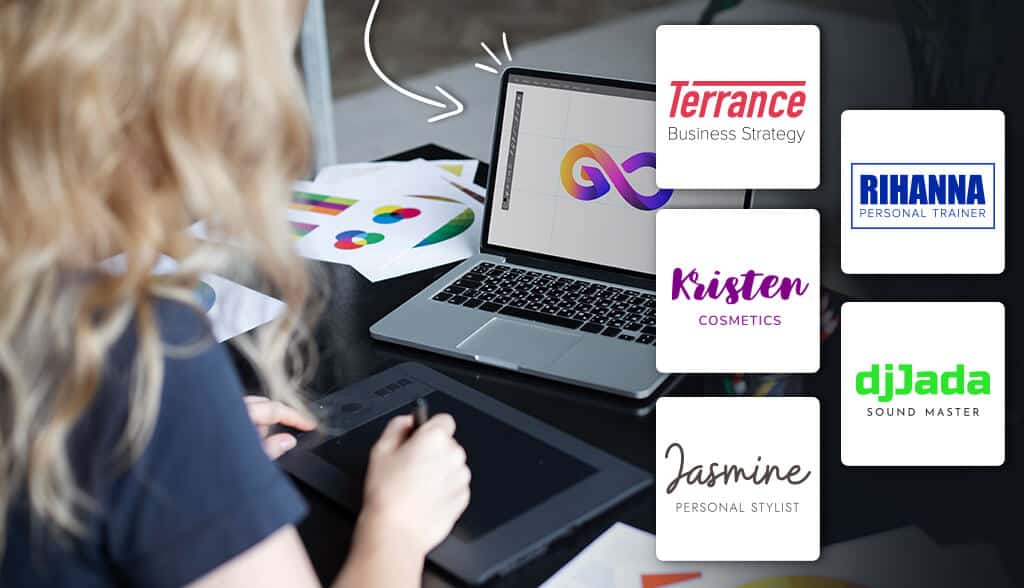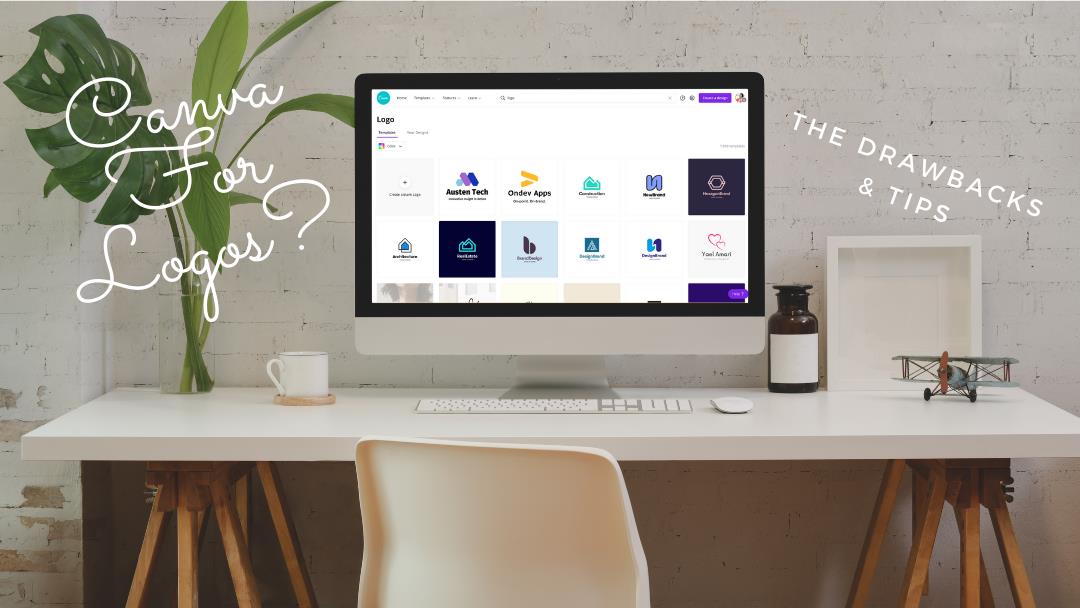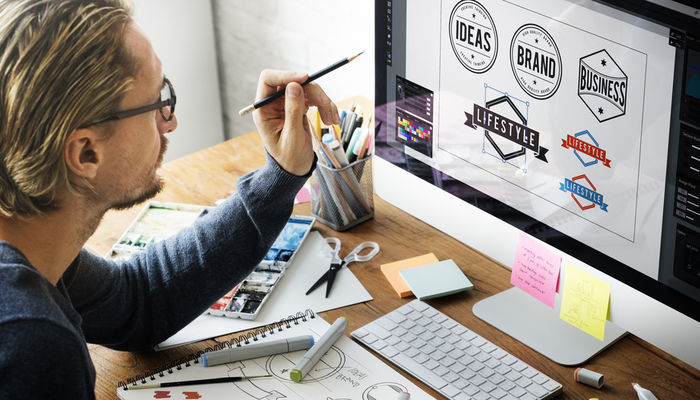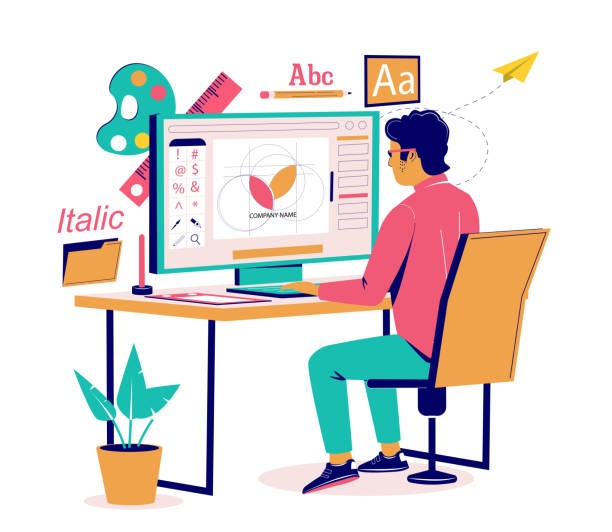
In today's digital age, establishing a strong online presence is essential for success. One powerful tool to achieve this is a perfect logo design.
A well-crafted logo can captivate audiences, enhance brand recognition, and convey your company's values.
In this article, we will explore twelve effective tricks to amplify your online presence through logo design. Discover how color, font, symbolism, and simplicity can all contribute to a logo that resonates with your target audience and elevates your brand.
Understanding the Importance of a Perfect Logo Design
A well-crafted logo design serves as the cornerstone of a company's brand identity, making it crucial for businesses to understand the importance of creating a perfect logo.
In today's digital age, where competition is fierce and attention spans are short, a professional logo design can make or break a business. It is not just a visual representation of the brand; it is a powerful tool that communicates the values, mission, and personality of the company.
To create a perfect logo, it is essential to choose the right logo design software that offers a wide range of features and customization options. Professional logo design ensures that the logo is unique, memorable, and versatile, enabling it to stand out amidst the cluttered marketplace.
Choosing the Right Colors for Your Logo
To create a visually appealing and impactful logo, it is important to carefully choose the right colors that complement the brand's identity and resonate with the target audience. Colors have the power to evoke emotions and convey messages without words. Here are three important considerations when choosing the right colors for your logo:

Brand Identity: The colors you choose should align with your brand's identity and personality. Think about the emotions and values you want to associate with your brand and select colors that reflect those qualities.
Target Audience: Understand your target audience and their preferences. Different colors have different meanings and can evoke different emotions in different cultures and demographics. Consider the age, gender, and cultural background of your target audience when selecting colors.
Psychological Elements: Colors have psychological associations. For example, blue is often associated with trust and reliability, while red can evoke feelings of passion and energy. Consider the psychological impact of each color and how it aligns with your brand's message and objectives.
Selecting the Perfect Font for Your Logo
When it comes to creating a memorable logo, the font style you choose can have a significant impact on the overall look and feel of your brand.
Typography plays a crucial role in conveying your brand's personality and values to your target audience.
Font Style Impact
The font style you choose for your logo can have a significant impact on its overall visual appeal and message. Typography trends are constantly evolving, and it's essential to stay updated to create a logo that resonates with your target audience.
Here are three key considerations when selecting the perfect font for your logo:

Reflect your brand personality: The font style should align with your brand's values and personality. Whether you want to convey elegance, playfulness, or professionalism, choose a font that embodies these traits.
Font pairing: Pairing fonts is a great way to create contrast and visual interest in your logo. Experiment with different combinations to find the perfect balance between primary and secondary fonts.
Readability and scalability: Ensure that the font you choose is legible at various sizes and across different platforms. A well-designed logo should be easily recognizable whether it's displayed on a billboard or a mobile device.
Branding Through Typography
Consistently choosing the right font for your logo is crucial in establishing a strong brand identity and effectively communicating your message to your target audience. Typography trends are constantly evolving, and it is important to stay updated to ensure that your logo remains relevant and impactful.
When selecting a font for your logo, it is essential to consider your brand values and how you want to be perceived by your audience. The font you choose should align with your brand's personality and convey the right emotions. For example, if you want to portray a modern and innovative image, you might opt for a clean and geometric font. On the other hand, if your brand values tradition and authenticity, a classic serif font might be more appropriate.
Incorporating Meaningful Symbols and Icons
One key aspect of logo design is the incorporation of a select number of meaningful symbols and icons, as they can significantly enhance the impact and message of the logo.
Meaningful symbolism allows the logo to convey a deeper meaning and connect with the audience on a subconscious level. When selecting icons, it is important to choose ones that are relevant to the brand and its values.

Icons should be simple, yet visually appealing, as they need to be easily recognizable and memorable. Additionally, the icons should be versatile and adaptable, allowing them to be used in various sizes and mediums without losing their essence.
Designing a Logo That Reflects Your Brand's Personality
Designing a logo that captures and embodies your brand's personality requires careful consideration of both visual elements and messaging. It is essential to incorporate visual storytelling into logo design, as this helps convey your brand's story and values in a compelling and engaging way. By using images, colors, and typography that align with your brand's identity, you can create a logo that resonates with your target audience.
Additionally, using psychological principles in logo design can enhance its effectiveness. For example, using colors that elicit specific emotions or incorporating shapes that evoke certain feelings can help create a deeper connection with your audience. By understanding the psychology behind design elements, you can design a logo that not only reflects your brand's personality but also appeals to the emotions and desires of your audience.
Creating a Memorable and Recognizable Logo
To ensure that your logo stands out from the competition and remains memorable in the minds of your audience, it is important to incorporate unique design elements and strategic branding techniques. Creating a unique and eye-catching logo is essential in capturing the attention of your target audience. Here are three ways to achieve this:
Use visual storytelling: Incorporate elements and symbols that convey the essence of your brand's story. This allows your audience to make an emotional connection with your logo and remember it more easily.
Simplicity is key: A cluttered logo can be overwhelming and difficult to remember. Opt for a clean and simple design that is easy to recognize and remember.
Choose the right colors: Colors have a significant impact on how people perceive your brand. Select a color palette that aligns with your brand's personality and evokes the desired emotions.

The optimal logo size and placement for online platforms can significantly impact the visibility and effectiveness of your brand's online presence.
When it comes to the optimal logo size, it's important to strike a balance between being visually appealing and not overpowering the website or application. A logo that is too small may go unnoticed, while one that is too large can overshadow the content. It is recommended to create a logo that is scalable, allowing it to be resized without losing its clarity or legibility.
As for logo placement on websites, it should be strategically positioned where it can be easily seen without obstructing the user experience. Placing the logo in the top left corner, commonly known as the 'prime real estate' of a website, ensures maximum visibility and brand recognition.
Ensuring Your Logo Is Scalable and Versatile
Consistently ensuring your logo is scalable and versatile is essential in maintaining a professional and cohesive brand image across various platforms and marketing materials.
Here are some tips to ensure your logo meets these criteria:
Scalability for print: Your logo should be designed in a way that it can be easily resized without losing its quality or legibility. This is particularly important for print materials such as business cards, brochures, and billboards.
Incorporating custom illustrations: Custom illustrations can add a unique touch to your logo and make it more memorable. However, it's important to consider how these illustrations will translate across different mediums. Ensure that the details and intricacies of the illustrations are not lost when the logo is scaled down or reproduced in black and white.

Versatility across platforms: Your logo should be adaptable to different digital platforms, such as websites, social media profiles, and mobile apps. It should look equally appealing and recognizable whether it's displayed on a large desktop screen or a small mobile device.
Utilizing Negative Space in Logo Design
An effective way to enhance the visual impact of your logo design is by strategically utilizing the often overlooked potential of negative space.
Negative space refers to the empty space surrounding and within the main elements of a design. By cleverly incorporating negative space techniques into your logo design, you can create a visually stunning and memorable logo that leaves a lasting impression on your audience.
Creative logo designs often make use of negative space to create hidden symbols or visual illusions, adding depth and intrigue to the design. This technique not only showcases your creativity and attention to detail but also adds an element of surprise for your audience.
Adding a Touch of Simplicity and Minimalism
By incorporating the principles of simplicity and minimalism, you can create a logo that communicates your brand's message clearly and effectively. Simplicity in logo design is all about stripping away unnecessary elements and focusing on the core essence of your brand. Minimalist logo trends have gained popularity in recent years for their clean and timeless appeal.
Here are three reasons why adding a touch of simplicity and minimalism to your logo can greatly enhance your online presence:
Memorable: A simple and minimalistic logo is more likely to stick in people's minds, ensuring that your brand remains memorable.

Versatile: Minimalist logos are highly adaptable and can be easily scaled down for smaller applications without losing their impact.
Timeless: Simplistic designs stand the test of time. By avoiding trendy elements, your logo will remain relevant and fresh for years to come.
Incorporating simplicity and minimalism into your logo design is a powerful way to create a lasting impression and amplify your online presence.
Making Your Logo Mobile-Friendly
In today's mobile-dominated world, it is crucial for businesses to ensure that their logo is mobile-friendly. A responsive logo design allows for seamless adaptation across various screen sizes and devices, enhancing user experience.
Scalability for mobile is also essential, as it ensures that your logo remains clear and legible even on smaller screens. By optimizing logo visibility on mobile, you can effectively capture the attention of your target audience and make a lasting impression.
Responsive Logo Design
Mobile devices have become an essential part of our daily lives, making it imperative for businesses to prioritize responsive logo design to ensure optimal user experience. A responsive logo design is crucial in today's digital landscape, where users access websites and apps from a variety of devices with different screen sizes.
Here are three reasons why businesses should invest in responsive logo design:

Consistency: A responsive logo design ensures that your brand identity remains consistent across all platforms, regardless of the device being used.
Visual storytelling: Incorporating visual storytelling elements into your responsive logo design can effectively communicate your brand's values and message to your audience.
Improved user experience: A responsive logo design enhances the user experience by adapting to different screen sizes and orientations, ensuring that your logo is always legible and visually appealing.
Scalability for Mobile
To ensure optimal visibility and usability on smaller screens, businesses must prioritize the scalability of their logo for mobile devices. Mobile responsiveness is crucial in today's digital age where the majority of users access the internet through their smartphones. A logo that is not adaptable to mobile screens may appear distorted or illegible, leading to a poor user experience and a negative impression of the brand.
When designing a logo for mobile devices, it is important to consider the limited screen space and the need for clarity. Simplifying the design and using clear, legible fonts can help ensure that the logo remains recognizable and impactful on smaller screens. Additionally, testing the logo on various mobile devices and screen sizes can help identify any issues and make necessary adjustments to enhance its adaptability.
Optimizing Logo Visibility
Achieving maximum logo visibility on mobile devices is essential for capturing the attention of smartphone users and effectively promoting your brand. With the ever-increasing number of people accessing the internet through their mobile devices, it is crucial to optimize your logo for mobile screens.
Here are three effective ways to improve logo visibility and enhance logo recognition on mobile:

Simplify your logo design: Mobile screens are smaller than desktop screens, so it is important to simplify your logo design to ensure it remains clear and legible on smaller screens.
Use scalable vector graphics (SVG): SVG files allow your logo to scale without losing quality, ensuring it appears crisp and sharp on all devices, including mobile.
Optimize loading speed: Mobile users expect fast-loading websites. By optimizing your logo for mobile, you can reduce file size and improve loading speed, ensuring your logo appears quickly and seamlessly on mobile devices.
Testing and Refining Your Logo Design for Maximum Impact
Logo testing is an essential step in ensuring the maximum impact of your design. By conducting thorough testing, you can gather valuable feedback and make necessary refinements to create a logo that truly resonates with your audience.
There are various testing techniques that can be employed to gauge the effectiveness of your logo design. One technique is A/B testing, where you create multiple versions of your logo and test them against each other to see which one performs better.
Another technique is focus group testing, where you gather a group of individuals who represent your target audience and gather their opinions and reactions to your logo design.
Additionally, you can use eye-tracking software to understand how people visually interact with your logo and make adjustments accordingly.

Frequently Asked Questions
How Can I Make My Logo Mobile-Friendly?
To make your logo mobile-friendly, focus on responsive design by optimizing it for different screen sizes and ensuring adaptability for various devices. Compatibility with mobile platforms is crucial to enhance your online presence.
What Is Negative Space in Logo Design and How Can I Utilize It Effectively?
Negative space in logo design refers to the empty spaces around and within a logo. It is a powerful tool that can be utilized effectively to create visual interest, convey hidden messages, and make a logo memorable. Exploring unique typography also enhances the impact of a logo.
How Do I Test and Refine My Logo Design for Maximum Impact?
Testing and refining a logo design is crucial for maximizing its impact. By gathering feedback from target audiences and conducting A/B testing, you can identify areas for improvement and ensure your logo design is memorable. Avoiding common mistakes such as clutter and lack of simplicity is also essential.
What Are Some Tips for Choosing the Right Colors for My Logo?
When choosing colors for your logo, it's important to consider the psychological impact they may have on your audience. The right color choices can evoke specific emotions and help create a strong brand identity.
How Can I Ensure That My Logo Is Scalable and Versatile?
Ensuring a logo's scalability and versatility requires careful consideration. Scalability tips include designing in vector format and using simple shapes. Versatility considerations involve creating variations for different platforms and ensuring legibility at different sizes.
 Digital Art InstructionDIY Infographics DesignMobile Game ArtworkPersonalized Logo Design3D AnimationeBook Covers DesignPrivacy PolicyTerms And Conditions
Digital Art InstructionDIY Infographics DesignMobile Game ArtworkPersonalized Logo Design3D AnimationeBook Covers DesignPrivacy PolicyTerms And Conditions
